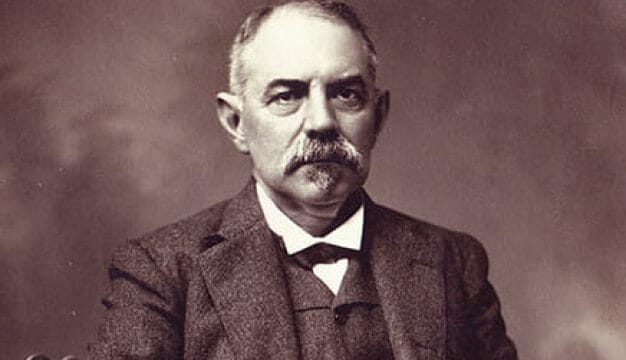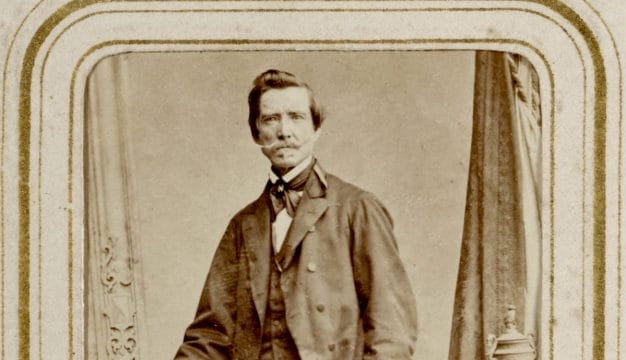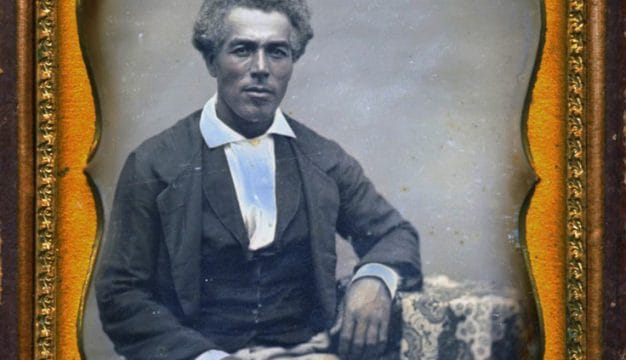Fort McClellan
 Building 3181, Fort McClellan
Fort McClellan was an important U.S. Army training base in Calhoun County from 1917 to 1999. In the years before its closing, Fort McClellan hosted an average population of approximately 10,000 military personnel and employed 1,500 civilian workers. The base occupied 45,679 acres in three parcels: the main post with 18,954 acres that included administrative, mission, and housing buildings; nearby Clarke Range Complex with 22,272 acres used for artillery and field training exercises; and the 4,500-acre Choccolocco Corridor, also used for field training. Since closing in 1999, one part of the former base now hosts private business, housing, and educational facilities, another is used by the Alabama National Guard as a training site, and another portion is now the Mountain Longleaf National Wildlife Refuge.
Building 3181, Fort McClellan
Fort McClellan was an important U.S. Army training base in Calhoun County from 1917 to 1999. In the years before its closing, Fort McClellan hosted an average population of approximately 10,000 military personnel and employed 1,500 civilian workers. The base occupied 45,679 acres in three parcels: the main post with 18,954 acres that included administrative, mission, and housing buildings; nearby Clarke Range Complex with 22,272 acres used for artillery and field training exercises; and the 4,500-acre Choccolocco Corridor, also used for field training. Since closing in 1999, one part of the former base now hosts private business, housing, and educational facilities, another is used by the Alabama National Guard as a training site, and another portion is now the Mountain Longleaf National Wildlife Refuge.
Founding to World War I
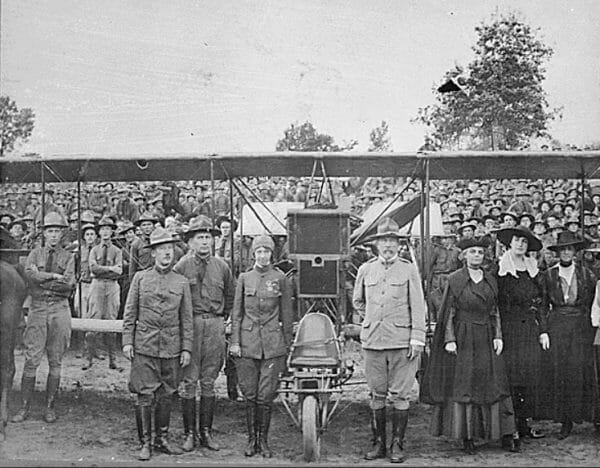 Aviator Ruth Law at Camp McClellan
Military use of the property dates to the close of the Spanish-American War (April-August 1898). The Army found Anniston to be ideal for temporary quarters for a large reserve force owing to its convenient rail connection to the Port of Mobile. Established in August 1898, the site was named Camp Shipp for Spanish-American War hero Lt. William E. Shipp. By late September, the base housed nearly 10,000 troops, but all were soon reassigned. That winter, its medical facilities were used as an Army hospital during an influenza epidemic. The camp was closed in March 1899, but Alabama’s Third District congressman Henry D. Clayton Jr. kept the Army interested in the site. In 1912, 20,000 National Guardsmen conducted maneuvers at the site, and the Army War College recommended that the federal government purchase the land, which it did in March 1917 for $247,000. Although the new camp did not displace any existing towns, it did devastate crops already in the field. The local chamber of commerce eventually repaid farmers for the lost crops over a 17-year period.
Aviator Ruth Law at Camp McClellan
Military use of the property dates to the close of the Spanish-American War (April-August 1898). The Army found Anniston to be ideal for temporary quarters for a large reserve force owing to its convenient rail connection to the Port of Mobile. Established in August 1898, the site was named Camp Shipp for Spanish-American War hero Lt. William E. Shipp. By late September, the base housed nearly 10,000 troops, but all were soon reassigned. That winter, its medical facilities were used as an Army hospital during an influenza epidemic. The camp was closed in March 1899, but Alabama’s Third District congressman Henry D. Clayton Jr. kept the Army interested in the site. In 1912, 20,000 National Guardsmen conducted maneuvers at the site, and the Army War College recommended that the federal government purchase the land, which it did in March 1917 for $247,000. Although the new camp did not displace any existing towns, it did devastate crops already in the field. The local chamber of commerce eventually repaid farmers for the lost crops over a 17-year period.
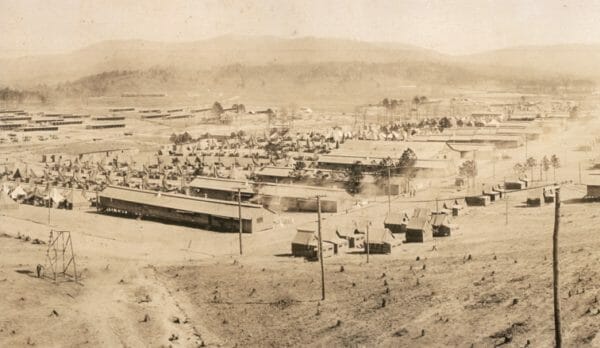 Camp McClellan, 1918
After entering World War I in April 1917, the U.S. War Department established Camp McClellan on July 18, 1917, as a rapid-mobilization base and permanent National Guard facility. It was named in honor of U.S. Army major general George B. McClellan. By year’s end, more than 27,000 men were training there, including the 29th Infantry Division of the National Guard, under the command of Maj. Gen. Charles G. Morton. They helped civilians construct some 500 buildings to augment the existing 1,000 structures. Troops were quartered in rows of tents with wood floors. A breakdown in discipline during Morton’s two-month absence in France, though, caused a delay in the division’s deployment until June 1918. At the end of the war, Camp McClellan was placed on “caretaker status,” which typically meant that it was staffed by only a few maintenance personnel. By 1926, however, Congress allocated funds to construct additional facilities. Generally, buildings were grouped into five main areas: headquarters, warehouses, hospital facilities, magazines for ammunition storage, and a rail area, with structures being mostly in the Spanish Colonial Revival style characteristic of U.S. military facilities in the Southeast.
Camp McClellan, 1918
After entering World War I in April 1917, the U.S. War Department established Camp McClellan on July 18, 1917, as a rapid-mobilization base and permanent National Guard facility. It was named in honor of U.S. Army major general George B. McClellan. By year’s end, more than 27,000 men were training there, including the 29th Infantry Division of the National Guard, under the command of Maj. Gen. Charles G. Morton. They helped civilians construct some 500 buildings to augment the existing 1,000 structures. Troops were quartered in rows of tents with wood floors. A breakdown in discipline during Morton’s two-month absence in France, though, caused a delay in the division’s deployment until June 1918. At the end of the war, Camp McClellan was placed on “caretaker status,” which typically meant that it was staffed by only a few maintenance personnel. By 1926, however, Congress allocated funds to construct additional facilities. Generally, buildings were grouped into five main areas: headquarters, warehouses, hospital facilities, magazines for ammunition storage, and a rail area, with structures being mostly in the Spanish Colonial Revival style characteristic of U.S. military facilities in the Southeast.
Camp McClellan was officially renamed Fort McClellan on July 1, 1929. Construction slowed during the Great Depression, but with New Deal funds the Civilian Conservation Corps (CCC) constructed additional buildings, a golf course, a railroad spur, a gasoline storage facility, and an airfield. During this time, the Army 22nd Infantry Regiment was based at the fort, training reserve units and National Guardsmen, maintaining the headquarters for the CCC district, and administering 45 CCC camps in four states.
World War II
World War II brought additional money and troops to Fort McClellan. Some $6.5 million was used to add 47 miles of roads, sewage facilities, an 80-building hospital, and housing for troops, among other buildings. In 1940, the Army purchased about 22,000 acres northwest of Anniston for artillery training and as a bivouac area for National Guard training. The artillery range had been named in honor of Confederate artillery officer John Pelham, but was renamed “Clarke Range Complex” in September 2023 for Mary Elizabeth Clarke, the former Women’s Army Corps (WAC) Center and School commander at Fort McClellan. In 1941, Alabama deeded the Army the Choccolocco Corridor, a narrow strip of land connecting Fort McClellan with the Talladega National Forest, for field training.
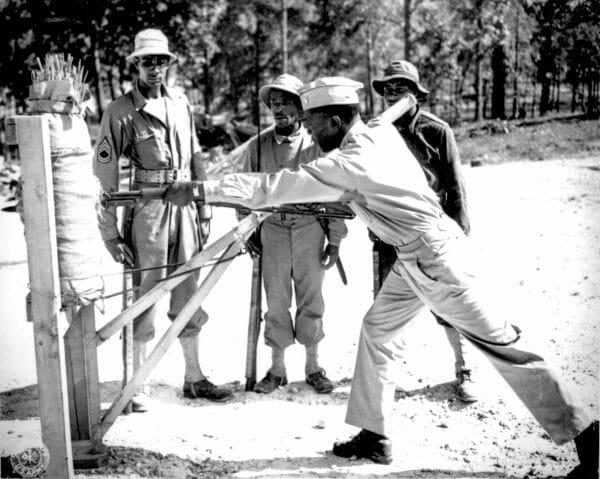 Bayonet Practice at Fort McClellan
In all, nearly 500,000 military personnel trained at Fort McClellan during World War II. The first group, the 27th Infantry Division of the New York National Guard, had been at the base a year when Japan attacked Pearl Harbor on December 7, 1941; 12 days later the division was ordered to the Pacific Theater. Also of note, the 92nd Infantry Division, the Army’s second “Negro division,” was activated October 15, 1942, at Fort McClellan. Over the next year, about 6,500 African American troops trained at Fort McClellan. In 1943, two detachments of the Women’s Army Corps (WAC), one white and one African American, were activated at Fort McClellan.
Bayonet Practice at Fort McClellan
In all, nearly 500,000 military personnel trained at Fort McClellan during World War II. The first group, the 27th Infantry Division of the New York National Guard, had been at the base a year when Japan attacked Pearl Harbor on December 7, 1941; 12 days later the division was ordered to the Pacific Theater. Also of note, the 92nd Infantry Division, the Army’s second “Negro division,” was activated October 15, 1942, at Fort McClellan. Over the next year, about 6,500 African American troops trained at Fort McClellan. In 1943, two detachments of the Women’s Army Corps (WAC), one white and one African American, were activated at Fort McClellan.
During the war, the fort served primarily as a replacement training center to prepare soldiers for combat. After Japan surrendered in August 1945, soldiers were trained for occupation duty. Fort McClellan also included a company of Japanese Americans who helped familiarize American troops with Japanese customs. In 1944, a group of these soldiers refused to participate in combat training to protest the mass incarceration of Japanese Americans in the United States. Many in the group were arrested, with some being convicted and imprisoned before being paroled in 1946. The fort also housed approximately 3,000 German and Italian prisoners of war between 1943 and 1946. Their most lasting legacy is the art they created, particularly murals depicting scenes from their homeland on the walls of Remington Hall, the former officer’s club. It was added to the state’s list of Places in Peril in 2012 by the Alabama Historical Commissionand Alabama Trust for Historic Preservation.
Post-World War II
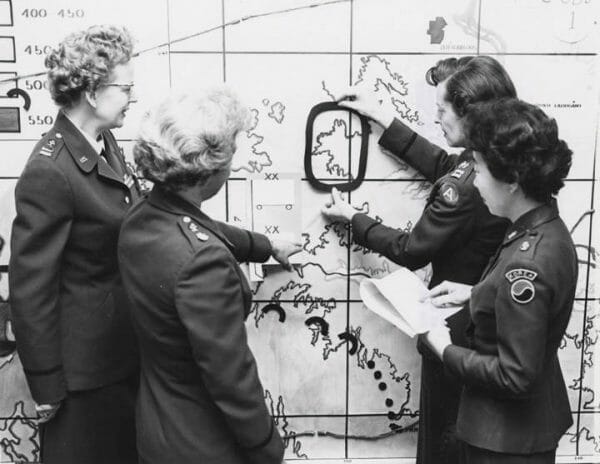 WAC Officer Training
In May 1947, all remaining recruits who were training at the fort were transferred to Fort Jackson in South Carolina, and the Army moved to deactivate Fort McClellan. Although the local community and Alabama’s congressional delegation invited Dwight D. Eisenhower, then the Army’s chief of staff, to visit the facility, at the end of June 1947 it again was placed on custodial status. By 1950, Cold War tensions and the Korean War prompted new defense spending, and Fort McClellan was reactivated to train National Guardsmen in the summer. In 1951, the facility became the permanent home of the Chemical Corps School (later the U.S. Army Chemical Center and School). By 1955, the school offered advanced training in all phases of chemical, biological, and radiological warfare to all branches of the U.S. military as well as military personnel from other countries. The base hospital was refurbished in the early 1950s chiefly to treat chest diseases, primarily tuberculosis, but in the mid-1950s, the Army closed the aging facility and transferred the patients elsewhere. Units in the Army medical, ordnance, and transportation services as well as chemical training units and WAC reservists also began training at the fort. Also in the mid-1950s, the Women’s Army Corps School, operated by the WAC Center, was founded and a museum honoring the Corps was opened; it remained at McClellan until the base closed. All women inductees began their service at the WAC Center until the Corps was discontinued in 1977. Maj. Gen. Mary E. Clarke, the last director of the WAC, later became the commanding general of Fort McClellan from 1978 to 1980 and was the first female officer ever to command a major Army installation.
WAC Officer Training
In May 1947, all remaining recruits who were training at the fort were transferred to Fort Jackson in South Carolina, and the Army moved to deactivate Fort McClellan. Although the local community and Alabama’s congressional delegation invited Dwight D. Eisenhower, then the Army’s chief of staff, to visit the facility, at the end of June 1947 it again was placed on custodial status. By 1950, Cold War tensions and the Korean War prompted new defense spending, and Fort McClellan was reactivated to train National Guardsmen in the summer. In 1951, the facility became the permanent home of the Chemical Corps School (later the U.S. Army Chemical Center and School). By 1955, the school offered advanced training in all phases of chemical, biological, and radiological warfare to all branches of the U.S. military as well as military personnel from other countries. The base hospital was refurbished in the early 1950s chiefly to treat chest diseases, primarily tuberculosis, but in the mid-1950s, the Army closed the aging facility and transferred the patients elsewhere. Units in the Army medical, ordnance, and transportation services as well as chemical training units and WAC reservists also began training at the fort. Also in the mid-1950s, the Women’s Army Corps School, operated by the WAC Center, was founded and a museum honoring the Corps was opened; it remained at McClellan until the base closed. All women inductees began their service at the WAC Center until the Corps was discontinued in 1977. Maj. Gen. Mary E. Clarke, the last director of the WAC, later became the commanding general of Fort McClellan from 1978 to 1980 and was the first female officer ever to command a major Army installation.
Vietnam War Era
Chemical weapons training dominated Fort McClellan’s missions during the Vietnam War era of the 1960s and early 1970s. In 1962, chemical, biological, and radiological weapons training were consolidated at Fort McClellan. From 1966 to 1970, more than 30,000 soldiers were trained for service in Vietnam at Fort McClellan. Training during this era included the use of the incendiary agent Napalm B, the herbicide Agent Orange, and tear gas, as well as training with live nerve and blister agents. Beginning in January 1973, the Chemical Corps was split up and remained inactive until 1976. The Chemical School reopened at Fort McClellan in December 1979, but environmental concerns prevented the resumption of outdoor live-agent training. In July 1975, the Army Military Police School and its Army Polygraph School moved to Fort McClellan from Fort Gordon, Georgia, and two years later military police training opened to women. In 1978, the Army terminated the Women’s Army Corps and closed the WAC Center and School.
1980s-1990s
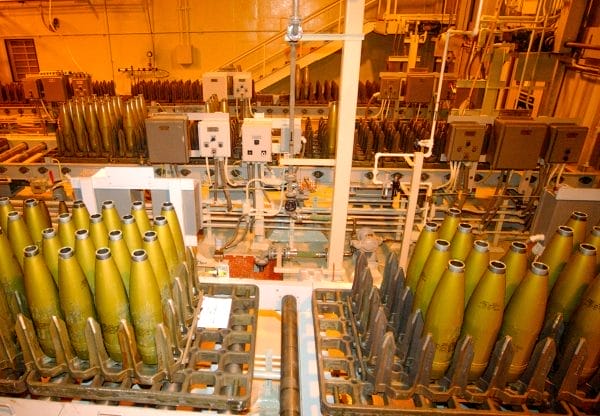 Anniston Chemical Agent Disposal Facility
During the 1980s and 1990s, Fort McClellan’s training missions largely dealt with U.S. chemical and biological warfare and reducing stockpiles of chemical agents. The Chemical Corps at Fort McClellan increased its training to provide each U.S. Army unit with its own chemical specialists to maintain their expertise in treatment and decontamination in case of chemical, biological, or radiological attacks. The $14.9 million indoor Chemical Defense Training Facility (CDTF) was completed in 1986 to provide “live-agent” chemical defense training, the only such facility of its kind at that time. After a new $1.9 million facility was completed in 1989, the newly renamed Department of Defense Polygraph Institute developed a program with nearby Jacksonville State University in which the university would award credit toward a master’s degree in polygraph to students in the Fort McClellan program.
Anniston Chemical Agent Disposal Facility
During the 1980s and 1990s, Fort McClellan’s training missions largely dealt with U.S. chemical and biological warfare and reducing stockpiles of chemical agents. The Chemical Corps at Fort McClellan increased its training to provide each U.S. Army unit with its own chemical specialists to maintain their expertise in treatment and decontamination in case of chemical, biological, or radiological attacks. The $14.9 million indoor Chemical Defense Training Facility (CDTF) was completed in 1986 to provide “live-agent” chemical defense training, the only such facility of its kind at that time. After a new $1.9 million facility was completed in 1989, the newly renamed Department of Defense Polygraph Institute developed a program with nearby Jacksonville State University in which the university would award credit toward a master’s degree in polygraph to students in the Fort McClellan program.
BRAC Threats and Closure
In the late 1980s, the Department of Defense began a process of closing and restructuring military facilities that the agency said were “unneeded or not fully utilized.” As part of that effort, the agency established the Defense Commission on Base Realignment and Closure (commonly known as BRAC) in 1988 to review recommendations for closure. The Army placed Fort McClellan on its closure lists in 1991 and 1993 because of its small size relative to other Army training centers, but it survived as a result of pressure from Congressman Glen Browder, whose Third District included Fort McClellan. In 1995, however the Army proposed closing McClellan completely and moving its missions to other bases.
The U.S. Congress and Pres. Bill Clinton approved that move and the facility was closed on schedule in May 1999. The Chemical School, the Chemical Defense Training Facility, the Training Brigade, and the Military Police School moved to Fort Leonard Wood, Missouri. The Department of Defense Polygraph Institute moved to Fort Jackson, South Carolina. The WAC Museum, renamed the U.S. Army Women’s Museum, already had relocated to Fort Lee, Virginia, in November 1998.
The Army spent an estimated $231 million to shut down the base and realized an annual savings of $40.6 million. The estimated cost to the local community was $600 million a year. In 2005, the U.S. General Accounting Office (present-day Government Accountability Office) reported that the Anniston-area economy had, however, recovered 94 percent of the civilian jobs lost in closing the fort.
Contamination from years of chemical and smoke training and much unexploded ordnance from artillery training had to be cleaned up and certified safe before the land and buildings could be turned over for civilian use. Veterans who trained at Fort McClellan have expressed concerns about exposure to toxins and pollutants used at Fort McClellan, but efforts in Congress to create a Fort McClellan Health Registry have been unsuccessful.
Local Control
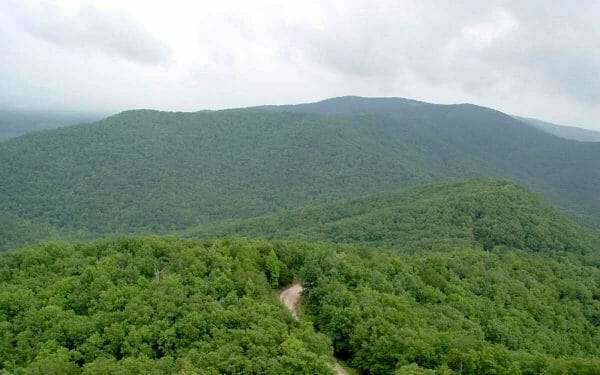 Mountain Longleaf National Wildlife Refuge
In early 1999, local officials established the Anniston-Calhoun County Joint Powers Authority (JPA) to oversee redevelopment and reuse of the former base. Late in 2000, the first parcel of property was turned over to the organization at no cost, although remediation and redevelopment continue. The JPA was supplanted by the McClellan Development Authority in 2010. Now a 10,000-acre mixed-use park called McClellan, the site hosts a variety of businesses and government agencies in the old fort buildings and in newly constructed facilities that employ several thousand individuals. In addition, Auburn University, Gadsden State Community College, and Jacksonville State established training and educational centers there. Some 950 residents live in refurbished and modified fort housing and in newly constructed housing. Approximately 9,000 acres of the main post was established in 2003 as the Mountain Longleaf National Wildlife Refuge under the U.S. Fish and Wildlife Service to preserve stands of longleaf pine, with assistance from JSU’s Environmental Policy and Information Center. In 2006, several areas of the former base were placed on the National Register of Historic Places for their architectural and military significance. The Department of Homeland Security operates the new Center for Domestic Preparedness in the former Chemical School and the CDTF, training military and civilian personnel in disaster and terrorism response. The Alabama National Guard took possession of present-day Clarke Ranges Complex and continues training exercises there, opening a new Armed Forces Reserve Center in July 2013.
Mountain Longleaf National Wildlife Refuge
In early 1999, local officials established the Anniston-Calhoun County Joint Powers Authority (JPA) to oversee redevelopment and reuse of the former base. Late in 2000, the first parcel of property was turned over to the organization at no cost, although remediation and redevelopment continue. The JPA was supplanted by the McClellan Development Authority in 2010. Now a 10,000-acre mixed-use park called McClellan, the site hosts a variety of businesses and government agencies in the old fort buildings and in newly constructed facilities that employ several thousand individuals. In addition, Auburn University, Gadsden State Community College, and Jacksonville State established training and educational centers there. Some 950 residents live in refurbished and modified fort housing and in newly constructed housing. Approximately 9,000 acres of the main post was established in 2003 as the Mountain Longleaf National Wildlife Refuge under the U.S. Fish and Wildlife Service to preserve stands of longleaf pine, with assistance from JSU’s Environmental Policy and Information Center. In 2006, several areas of the former base were placed on the National Register of Historic Places for their architectural and military significance. The Department of Homeland Security operates the new Center for Domestic Preparedness in the former Chemical School and the CDTF, training military and civilian personnel in disaster and terrorism response. The Alabama National Guard took possession of present-day Clarke Ranges Complex and continues training exercises there, opening a new Armed Forces Reserve Center in July 2013.
Further Reading
- Certain, Geni. Professor-Politician, the Biography of Congressman Glen Browder. Montgomery, Ala.: NewSouth Books, 2012.
- Morden, Bettie J. The History of the Women’s Army Corps, 1945-78. Washington, D.C.: The Center for Military History, 1990.
- Reed, Mary B., Charles E. Cantley, and Joe W. Joseph. Fort McClellan: A Cultural Resources Overview. Stone Mountain, Ga.: New South Associates, 1992.
- ———. Fort McClellan: A Popular History. Stone Mountain, Ga.: New South Associates, 1996.

